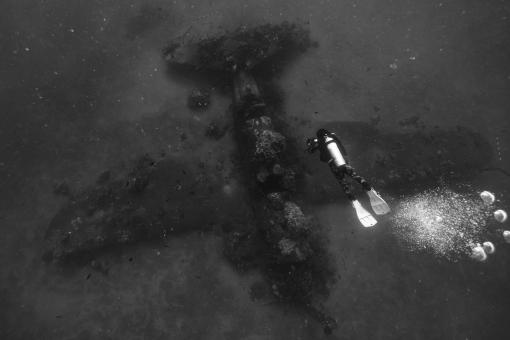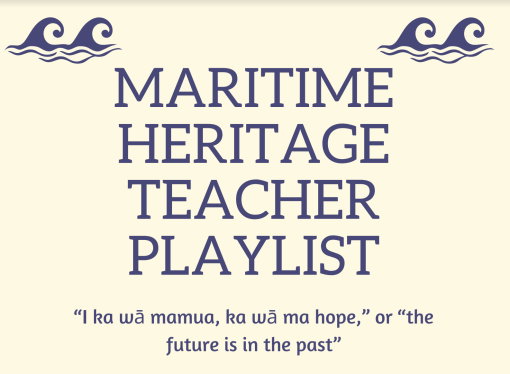Studying the Past To Preserve Our Future

This blog was written by Ashleigh Glickley of the Maritime Heritage Team.
“No matter what happens, you will be ok as long as you don’t forget to breathe.”
The words of my SCUBA diving instructor reverberated in my ears as I found myself in the midst of one of the most exhilarating experiences of my career. Several months prior, I joined a team of maritime archaeologists and science communicators working to document shipwrecks in Hawaiʻi, and as our departure grew near the reminder to breathe through the excitement, fear of the unknown and anticipation of the adventure would prove to be my mantra.

As a teacher from Kentucky, I was overjoyed to bring the work of an interdisciplinary group of scientists to my students in real-time. Post-pandemic I had spent many hours seeking out resources and collaborations to engage students in meaningful, project-based learning, and it was clear that this From Shore to the Abyss partnership between National Geographic Society and Ocean Exploration Trust would prove to be an invaluable experience.
Developing and imparting a curriculum unit centered around the research of the team began many months prior to our departure on October 10, 2022. The result was the Maritime Heritage Curriculum Playlist, a resource for teachers rooted in the guiding question: “If we live in the present, why do we care about the past?” Using the resources in this playlist, teachers build background knowledge prior to the expedition, engage with the team and learn about their research in real-time via ship-to-shore and explorer classroom interactions during the expedition, and relate what they had learned to a local context after the expedition.

Through this intensive collaboration, students took a deep dive into the history of the Hawaiian Islands. The wrecks that were explored by the team represent a diverse group of World War II planes, ships and other submerged artifacts. Viewing 3D images of the sites provide students a window into the past helping us to remember the difficult history of World War II on the islands, encouraging us to remind others of the social and physical implications of the war (both past and present), and urging us to restore the natural environment and cultural heritage to areas hardest hit.

In addition to viewing the 3D images of the underwater maritime sites, students interacted with the scientists live via ship-to-shore interactions. This allowed them to stay up to date with the research and ask their most pressing questions regarding the research. Educators aboard E/V Nautilus have participated in almost 6,000 interactions to schools, science centers, aquariums, and community events since they started broadcasting live in 2010.
While the expedition concludes on October 24, 2022, we will continue to gain new information from this voyage as the research teams begin to fully analyze all the data collected while at sea. The curriculum playlist provides additional ideas for how to connect what students learn from the expedition to their local context. This is a critical step for students who may not have access to the ocean, but are interested in learning more about applying the work of the team to local waterways. Similarly, the experiences from this voyage will continue to shape our future as educators for a long time following this expedition, as we bring them to classrooms around the country.

From Shore To the Abyss: Exploration of Maritime Heritage and Microplastic Pollution in the Main Hawaiian Islands
Our third From Shore to the Abyss expedition finds OET and National Geographic Society investigating maritime cultural heritage and plastic pollution in the waters around Lānaʻi and Maui. Both project teams will investigate evidence left behind by humans to better understand what happened in the past, as well as what this means for the future. Projects focus on the intersection of human actions and the ocean environment to inform policy and management of this ecosystem.



